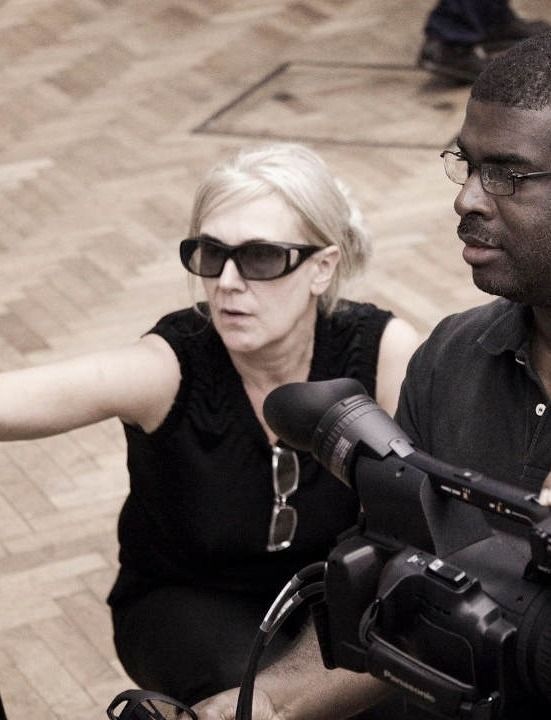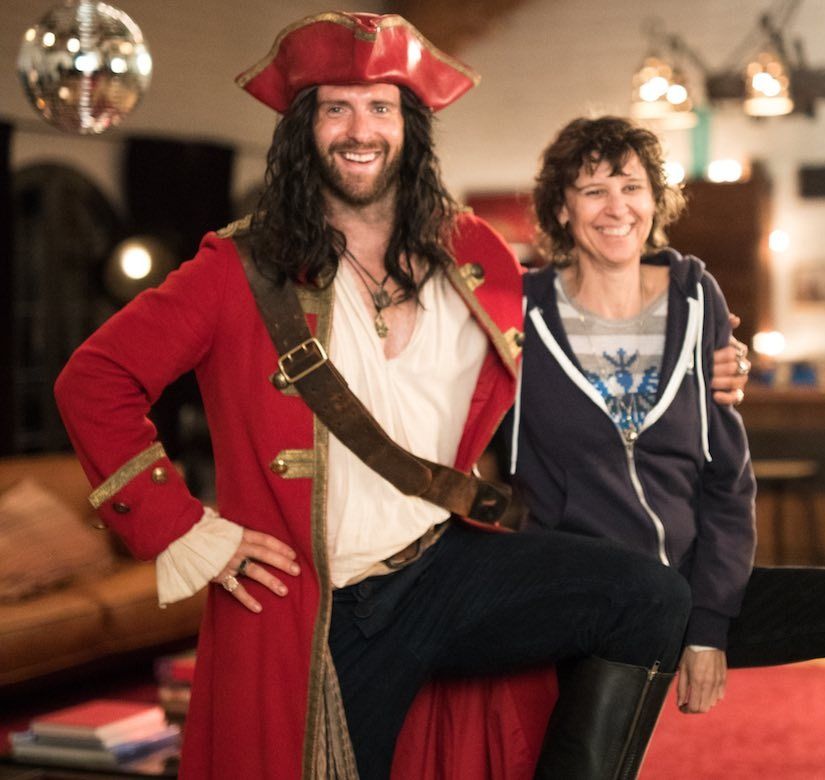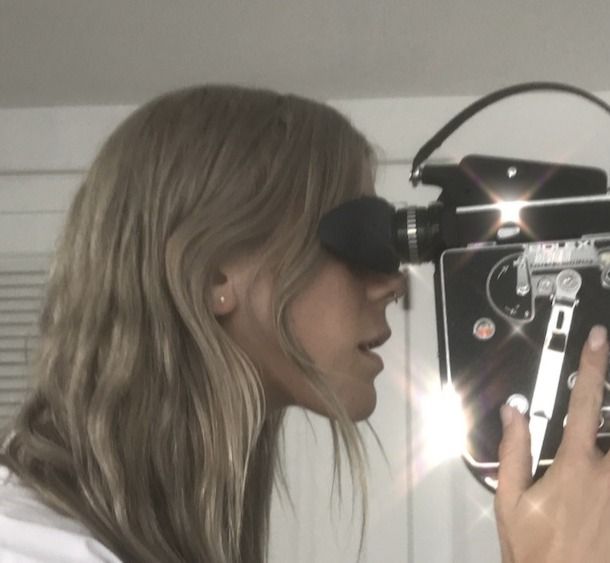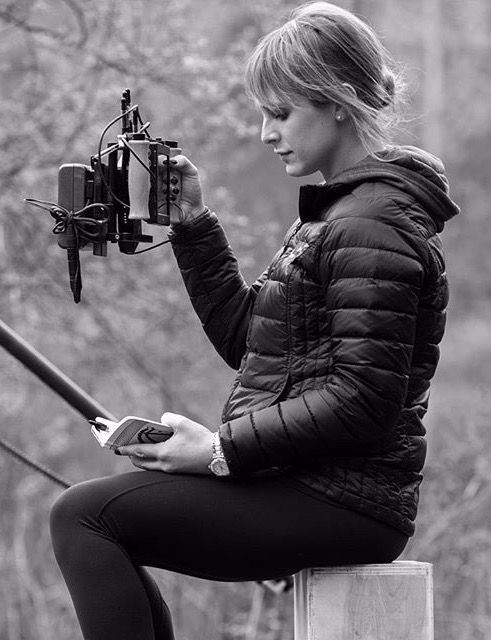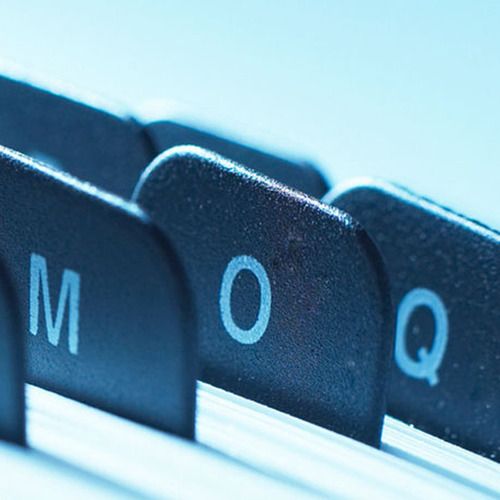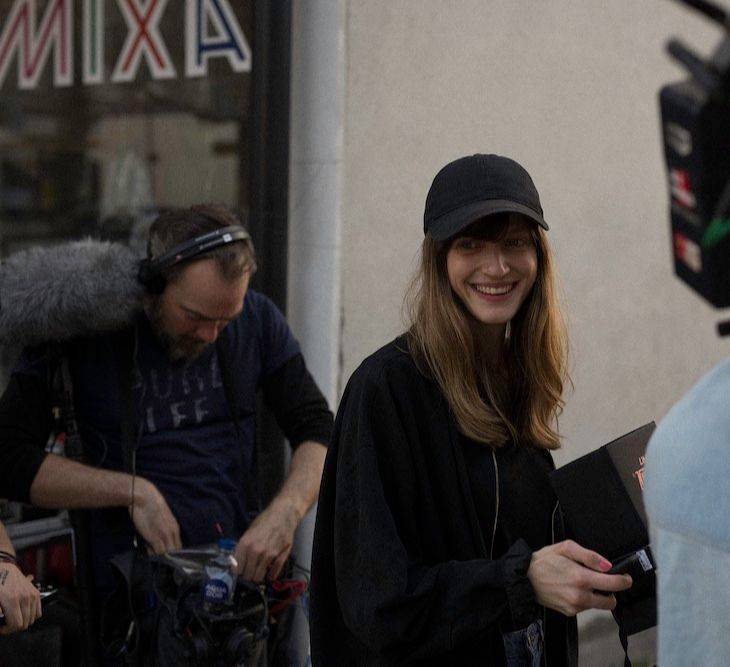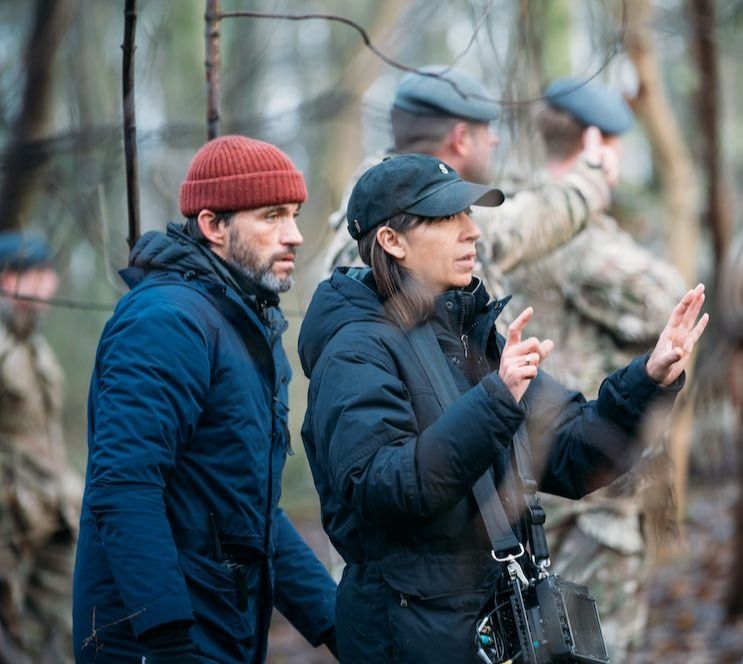When acclaimed director Annabel Jankel‘s feature film Tell It To The Bees, debuts in theaters and on-demand on May 3rd, moviegoers will be treated to a poignant look at the lives of two women in 1950s Britain, struggling to live authentically under the strictures of societal convention.
Starring Anna Paquin and Holliday Grainger and based on a novel by Fiona Shaw, the film looks honestly and unflinchingly at a variety of challenges placed on women of the time. Despite being a period drama, the characters’ struggles hold important resonance with contemporary issues. At the story’s core is a moving queer love story; it’s an important reminder that LGBTQIA+ stories have always existed, even when relegated to the margins of history. Guided by a deft directorial hand, the film is woven together with an underlying sense of compassion and wonder—don’t miss it when it hits theaters this Friday.
Tell It To The Bees is just the latest chapter in Annabel’s decades-spanning career. A prolific music video director, responsible for innovating the field in its earliest days, a co-founder of two production companies (Cucumber Studios and MJZ), and one of the creators of “the world’s first computer-generated TV host" (Max Headroom), Annabel’s body of work is an impressive cross-genre catalog of hits.
We spoke to Annabel about some of her career highlights, tapping into the cultural zeitgeist, and her desire to create work that keeps her audiences talking after the film is over.
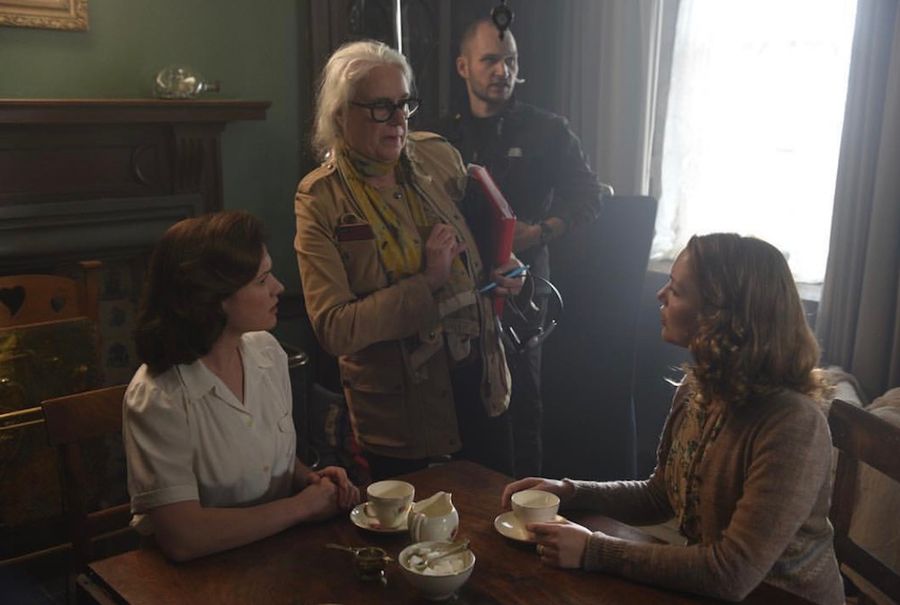
You’ve had a long and illustrious career, getting your start by creating music videos for bands like Elvis Costello, the Talking Heads, and Tom Tom Club. When did you first discover an interest in being behind the camera?
Annabel Jankel: As a teenager, I would go to my local cinema, the Hampstead Everyman, in North London, where not only did I fall in love with the actual cinema itself—I’ll be screening Tell It To The Bees there—I fell in love with watching films. I saw Bergman’s The Seventh Seal, and Antonioni’s Zabriskie Point, both of which were life changing to me. As I saw more films there, as the months went by, a worm of a thought started to eat into my mind: Perhaps I could not only watch films, but actually make them, as well? I started to research where to go to study film, and as someone who had always loved Visual Art, and had continually drawn, I figured I would start with art school.
Can you talk us through some of your personal career highlights?
With highlights come lowlights, but I will focus on the highlights! One co-director highlight was the animated film for Elvis Costello’s "Accidents Will Happen." A far as I know, this was the very first use of computer graphics in a music video (or Pop Promo as they were called in 1978, pre-MTV). Shooting Miles Davis for a music video . . . well, what can you say? A giant and a pussy cat. Always a genius.
Max Headroom in the mid '80s was an undeniable highlight, because it tapped into the zeitgeist at the time and was the net result of three years of development and experimentation. The fallout, however, was a lowlight, as Rocky Morton, George Stone and I, as the original creators, lost our baby. DOA was a highlight, as it was our first outing as film directors working in the US Studio System.
I have had numerous highlights as a solo director, and found the amazing creative freedom of working in commercials over the years—a truly fertile period. It’s thrilling as a filmmaker, as there is the latitude to mine various visual, aural and storytelling approaches. The field itself demands an original vision from the chosen director, and ad agencies have often been the biggest underwriter of original ideas and filmmaking.
I absolutely loved my time directing the documentary and music series Live From Abbey Road, for Sundance Channel, as music and film have always been a massive love. I would love to do a musical!
Making two small low budget films in the UK were both highlights, as simply getting anything made is THE highlight in and of itself! Tell It To The Bees, is currently a bright highlight, after many years in development. As it has recently been on its festival circuit, it’s been an inspirational time, being amongst fellow filmmakers and engaging in the debate that comes with the audiences at the Q+A’s.
Along with your work as a director, you’re also the co-founder of two successful production companies: Cucumber Studios and MJZ (Morton Jankel Zander). How did you balance running a production company with your own directorial career?
Oh, and having two children 18 months apart in the late '80s!
At the beginning, with Cucumber Studios—an animation company—it was a very experimental creative environment that Rocky Morton and I aimed to establish in London in the mid '70s, exploring an original approach to animation that evolved into a cross-discipline approach to filmmaking. We grew the company to include other directors, and moved from a converted corridor in Covent Garden to a studio in Mayfair (where David Bowie is on the cover of Ziggy Stardust and the Spiders From Mars) to building out a space in Soho. The company was mainly animation, and after ten years we closed it, to concentrate on commercial and film.
As co-directors at the time, Rocky Morton and I learned about the very specific world of production companies by joining Gower Frost’s company Jennie and Co, where we were on a roster of directors. Having always had my own shop, with Cucumber, it was a natural transition, in time, to forming a commercials company, MJZ, that could also be a creative home to nurture the talents of other directors. As a director, it’s an all-encompassing and all-consuming time, so it was critical to have a great producer (and I did, in Producer Francie Moore) and a solid administrative infrastructure to be able to walk away from, when in production, to fully immerse oneself in the creative.
What are some changes you’ve observed in the industry over the course of your career, especially for women filmmakers?
Well, for one, there’s Free The Bid, and the consciousness-raising and conversation is underway, though we are still woefully underrepresented by commercial production companies. There have been a few of us women filmmakers in commercials that have kept plugging away, but generally, until recently, we have not been truly addressing the paucity of opportunities. The increasing noise about this situation is music to my ears, but until the data is in, the jury is out. Thankfully, the agencies, the studios, the financiers, the broadcasters, and the streamers are no longer avoiding the conversation! As a result, we are beginning to see phenomenal filmmaking in all arenas, from women across the board, who have long been waiting in the wings to take centre stage.
"At the story’s core is a moving queer love story; it’s an important reminder that LGBTQIA+ stories have always existed, even when relegated to the margins of history."

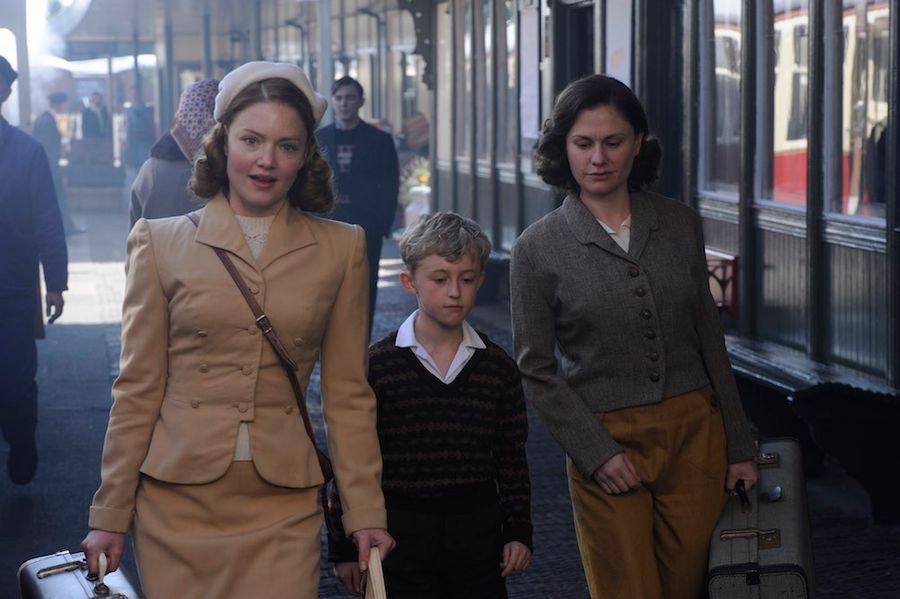
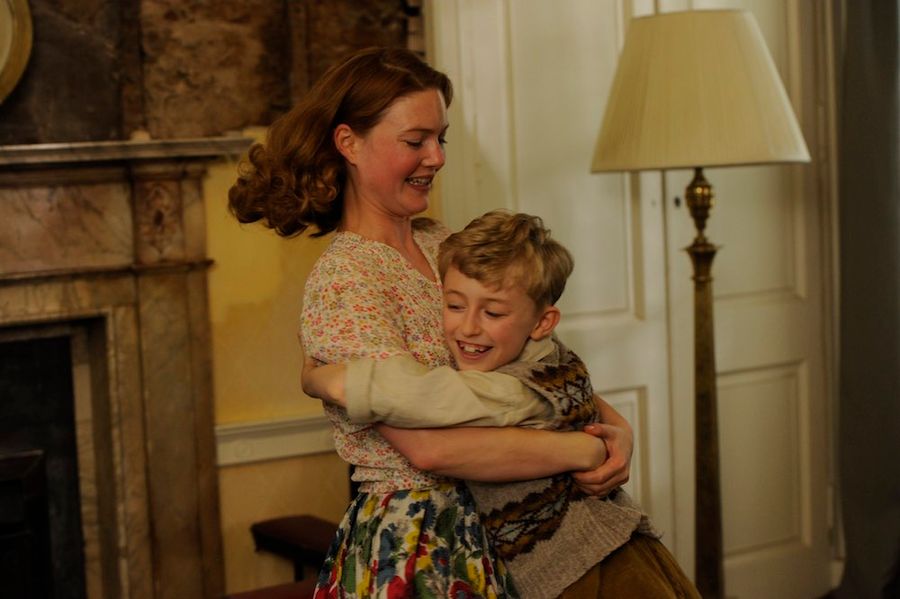
"I would like to know that outside the theatre, on the sidewalk, on the bus home, as the TV is turned off or the laptop closed and put away for the night, that the dialogue continues, that the story is not over, but that the conversation has started."
Your newest feature film, Tell It To The Bees, is based on a novel by Fiona Shaw. What first piqued your interest in creating an adaptation of this story?
I wanted to do a love story, and I fell in love with the book. It had so many things going for it: a period drama, women’s lives, a closed system, a young boy whose curiosity you want to embrace . . .
Specifically, I was attracted to a story of two outsiders, both women, coming together to share a love for one another (and a boy) in a time of intolerance. Plus . . . the bees! I felt it was a coming of age story for all three main characters, and the embryonic dawn of a new age for the town.
Did you and the screenwriter duo Henrietta and Jessica Ashworth make any significant changes from the original material when bringing the story to the screen?
Yes, there were several changes made, as obviously, in the evolution of a book to a script, it’s very often the case that to make a story work over a two hour period, various aspects need to be adapted.
Firstly, in our case, the timeline: In the book, the story unfolds over more than a year, with all the seasons, which is obviously untenable for a low budget film. We also needed to combine certain characters and lose others, to also make it viable as a streamlined story, and to keep the cast to the six main characters: Charlie, Lydia, Jean, Robert, Annie and Pam. We also had to sacrifice the actual housekeeper, lose a wife and child, combine a friend with a niece, and relocate from Yorkshire to Scotland!
But we added too, by including the element of nature as a character in and of itself, with the development of the bees. The writers, producer Daisy Allsop and I worked closely with the BFI to develop the script, and as the story developed, the trajectories of the characters emerged to define their future.
You worked with an acclaimed cast of actors in this film. Tell us about how you worked with your cast to get them into character for their roles and to capture the performances you were looking for.
We had a very short pre-production and shooting schedule, so though we didn’t have a traditional rehearsal time per se, we had an opportunity to be together in Scotland to read through the script, and discuss the characters and motivations at length.
Prior to starting shooting, Anna Paquin and I talked through the backstory of her character—a female doctor in the '50s—and how to some extent, she had to discover her “voice,” as her accent would define her past, and how her character unfurls before our eyes to become the person she was born to be. Both Anna and Holliday Grainger took incredible care and gave Gregor Selkirk, who plays ten year old Charlie, tremendous support. His confidence grew as indeed the character grows and comes of age, to take action when in a crisis. As the connections between the characters change, and as (like in most films) we were shooting out of order, it was critical to calibrate the incremental adjustments to the characters. Holliday, as Lydia, once vibrant and full of life, finds her feet and her innate sensitivity and empathy for both her loves—her son and her lover. She makes us long for her eventual happiness and growth, as a person on a road of self discovery.
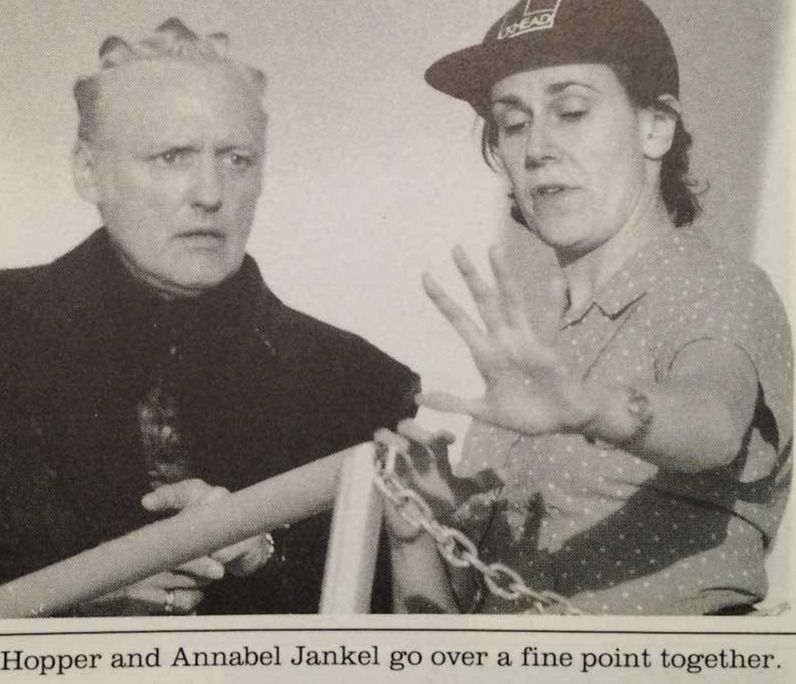
How did you and your crew work to bring the film’s viewers into the period setting, through cinematic choices (lighting, locations, costumes, etc)?
With our budget, it became obvious to me that we had to keep it very contained. After discussing what I was looking for, our location scout immediately suggested Deanston in Scotland, a tiny Mill town that has one perfectly preserved street with a Mill at one end. We extended the building with CG to make it loom larger in the background, and we replaced the missing chimneys, that had long since been removed, with smoking CG chimneys. Since we were in a conservation area, we were not allowed to paint the window frames, which in those days would have been black from the soot, but Ali Mitchell designed the costumes of the (very limited) townsfolk and Mill workers to evoke the heaviness of the daily grind and workload.
Though Lydia and Dr Jean have costume changes, as they progress through their relationship, Charlie and the workers stay pretty much the same throughout. I described to Andy Harris (our production designer) and Ali Mitchell (our costume designer) that rather than give a particular prescriptive colour palette, which would be unachievable with existing locations and budget, I wanted to evoke a feeling in our choices.
I thought that the bees—traditionally black and gold—could translate into two “senses” of a colour, Oilymarine and Alchemy. Jean would represent Oilymarine, and Lydia, Alchemy. That became the springboard. When I spoke to DP Bartosz Nalazek, I referenced two photographers that I admired and could provide inspiration: Raymond Depardon, who had photographed Glasgow in the early 1980s, and Bill Henson’s deep dark night time figurative photography. Bartosz was keen to maintain a period quality to the image, and (once we accepted we couldn’t shoot 35mm because of the time it would take to get dailies back) he suggested we shoot with the Arri Alexa and Alexa Mini with the Hawk Series Anamorphic lenses, from the 1970s.
Although we were not attempting to recreate a 1950s film, we wanted to allude to that era, and the look and feel gave us that breadth. We only had the option of two nights shooting in the whole 27 day schedule, so had to rely a lot on natural light, which was largely provided with near constant cloud cover, which I love; that flat softness is really so beautiful for skin tones.
"Though this story is set almost 70 years ago, I believe there are so many elements that echo what is still happening today."
At the heart of Tell It To The Bees is a queer love story, between two women who aren’t given much of an option to live their lives as fully as they’d like to. In general, the film doesn’t shy away from some of the more harrowing realities of life for women in 1950s Scotland. Were you interested in finding parallels and resonances between then and our own time, in telling this story?
Yes, on several levels and across many continents. In many countries, prejudice and intolerance of personal choices and loving whom we choose is still illegal and carries terrible risk. For me, it’s shocking on a daily basis to see what is happening in America regarding freedom of choice over our own bodies and the closing down of critical healthcare facilities for women. Though this story is set almost 70 years ago, I believe there are so many elements that echo what is still happening today.
Ultimately, what are you hoping that viewers take away from the film?
I hope that the story resonates, and that it’s an emotional experience that the viewer can relate to the characters and the challenges they face. I would like to know that outside the theatre, on the sidewalk, on the bus home, as the TV is turned off or the laptop closed and put away for the night, that the dialogue continues, that the story is not over, but that the conversation has started.
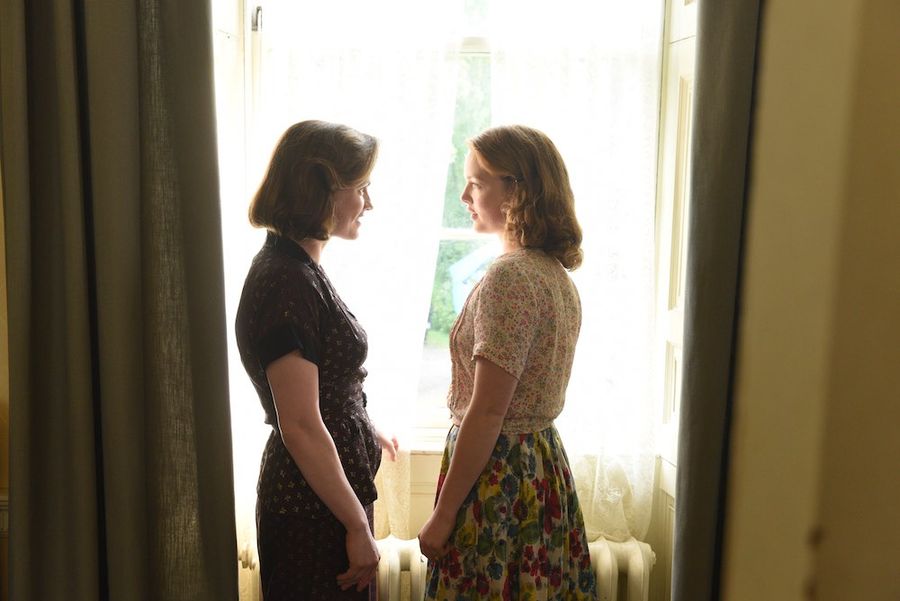
"I would urge all filmmakers starting up to go find your team, your crew, your fellow travelers, your like minded souls, as they will become your friends and supporters, your creative collaborators, and will enable you to learn your craft."
As a director who has directed feature films, music videos, and many, many commercials, how has working across all of these fields influenced your craft and shaped your vision as a filmmaker?
I think I always come back to thinking, “What’s the story I am telling, and what’s the idea behind it?” So that doesn’t mean I am wedded to one genre, or format, but am open to the organic process of an evolving situation. In the earliest animated music video for the Elvis Costello song, the story was mapped out meticulously with storyboards. In a feature, there is often not the time to be so precise, and storyboards and shot lists are often abandoned to just “make the day." But crucially, once the actors breathe the real life into the words, after years in development, that’s when the actual story and idea become a reality, even if it involves fantasy. I love that part.
What’s next for you?
A cup of tea.
Finally, what advice would you give to filmmakers just getting started in 2019?
I would urge all filmmakers starting up to go find your team, your crew, your fellow travelers, your like minded souls, as they will become your friends and supporters, your creative collaborators, and will enable you to learn your craft. They will weep and laugh with you along the way; they will nourish you when times are lean, and celebrate with you when things go well.
When you’re not actually working on a film, or you need a break—go make stuff!
